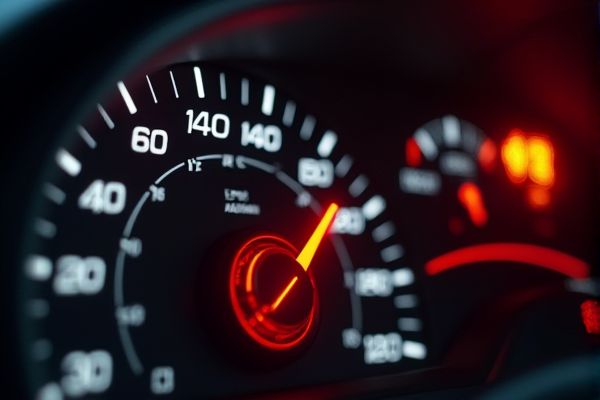
The Noble M12's check engine light serves as an early-warning diagnostic tool, indicating potential issues such as sensor failures, misfires, or emission control system errors that could impact engine performance and longevity. Prioritizing data through an OBD-II scan is essential for Noble M12 owners, as reading fault codes accurately directs maintenance efforts toward resolving specific system malfunctions before they evolve into more significant mechanical problems.
Noble M12 check engine light on meaning
Electrical Issues
Problems often arise due to the location of ECU and relays near the turbos, leading to overheating and electrical faults.
Exhaust Manifold Cracks
Common issue with early models, often requiring replacement with upgraded materials like 321 stainless steel.
Oil Starvation
High G-force maneuvers can cause oil starvation if the track day sump is not fitted.
Coolant Leaks
Leaks can lead to electrical shorts, as seen in cases where coolant enters the fuse box.
Alternator Issues
Voltage regulator damage can occur due to electrical shorts.
ECU Problems
Early models had issues with ECU reliability, which were addressed in later models.
Fuel Pump Wiring
Small wires can lead to inadequate power supply, necessitating a rewire.
Lack of Limited Slip Differential (LSD)
Early models lacked LSD, which was later rectified.
Weak Gearbox
Early 5-speed transmissions were prone to weakness, improved in later 6-speed models.
Overheating
Early models had issues with overheating due to lack of radiator fans, later resolved.
Intercooler Heat Soak
Small intercoolers can cause heat soak, often requiring upgrades.
For car users
If your Noble M12's check engine light comes on, safely slow down or pull over and quickly inspect common items like the gas cap and engine fluid levels, as these basic fixes can sometimes resolve the issue. If the light stays on or you experience symptoms such as rough idling or reduced power, schedule a diagnostic scan with a trusted mechanic immediately to prevent potential engine damage.
Ignoring the check engine light
Ignoring the Noble M12's check engine light can lead to progressively worsening engine performance, increased emissions, and inefficient fuel consumption, eventually resulting in costly repairs or even severe engine damage. Prioritizing immediate diagnostics and scheduled maintenance is essential to avoid escalating mechanical failures, ensure safety, and maintain optimal performance data as observed in similar high-performance engines.
How to reset?
To reset the Noble M12's check engine light, use an OBD-II scanner to retrieve and clear fault codes or disconnect the battery for 10-15 minutes after repairing any detected issues, ensuring the system's memory is reset. Always verify that the underlying causes of the error have been addressed and consult the vehicle's manual for any model-specific instructions before completing the reset process.
The Noble M12 check engine light can indicate issues that, after professional diagnostics (typically $100-$150), may require repairs costing anywhere from approximately $200 to $1,500 depending on whether the problem is as simple as a loose gas cap or involves more complex sensor or emissions system failures. Data suggests that early detection and prompt intervention are key to minimizing overall expenses, making a timely, thorough diagnostic the most cost-effective approach.
Future prevention
Regularly adhere to Noble M12's manufacturer-recommended maintenance schedule by using OEM parts and certified diagnostics to monitor key data points--such as oxygen sensor readings, fuel trim levels, and engine airflow--which are crucial in preventing sensor malfunctions that trigger the check engine light. Additionally, perform proactive system checks and prompt repairs using computerized fault code analysis, as data consistently shows that timely replacement of worn components and routine ECU updates significantly reduce unexpected check engine incidents.
